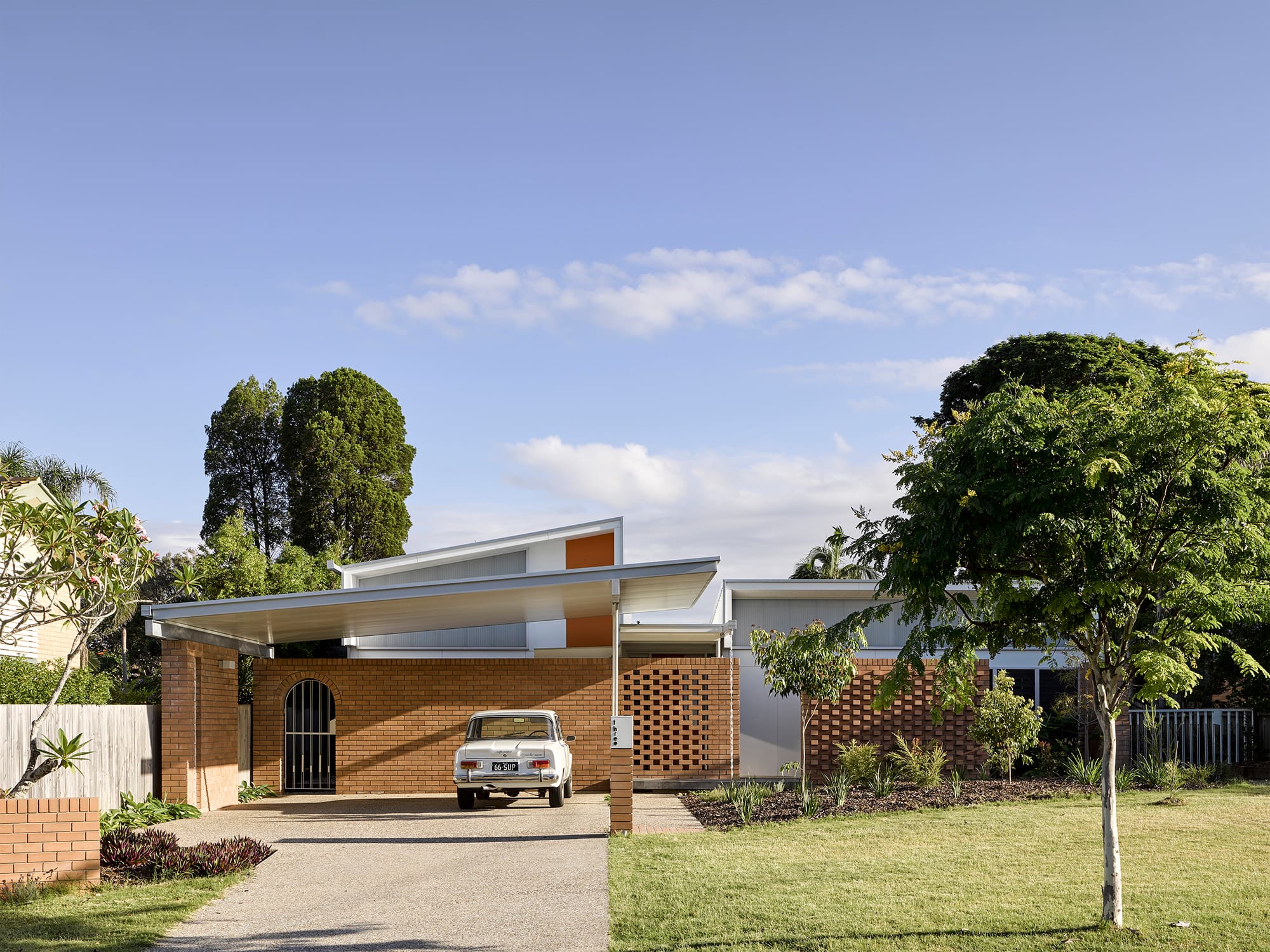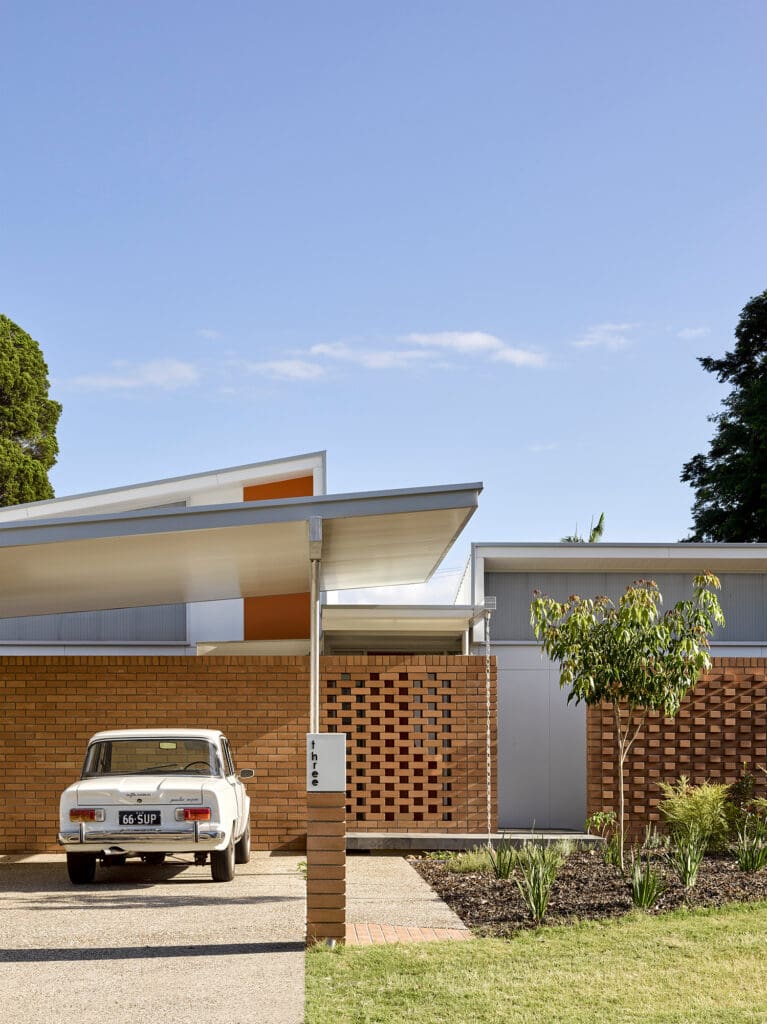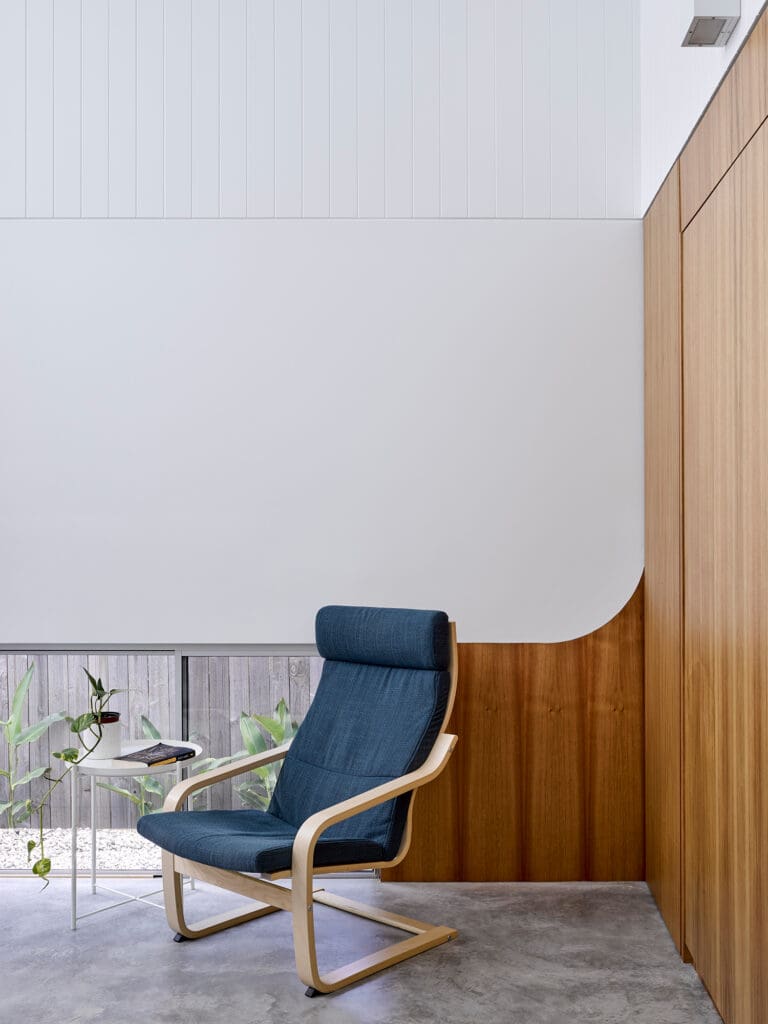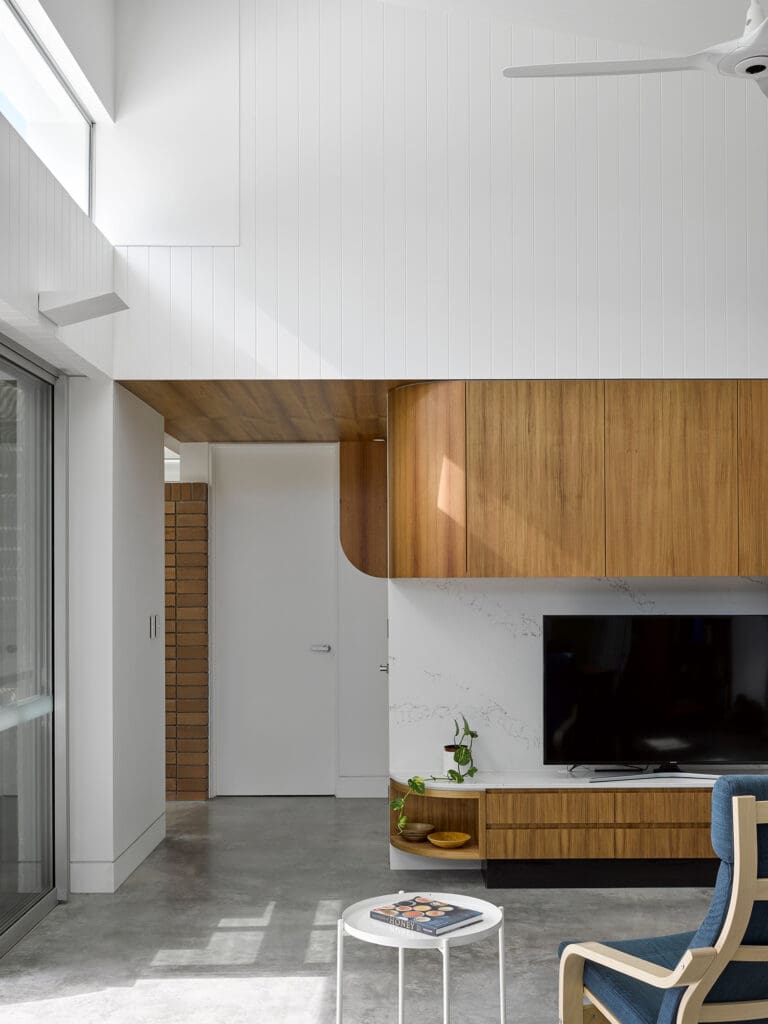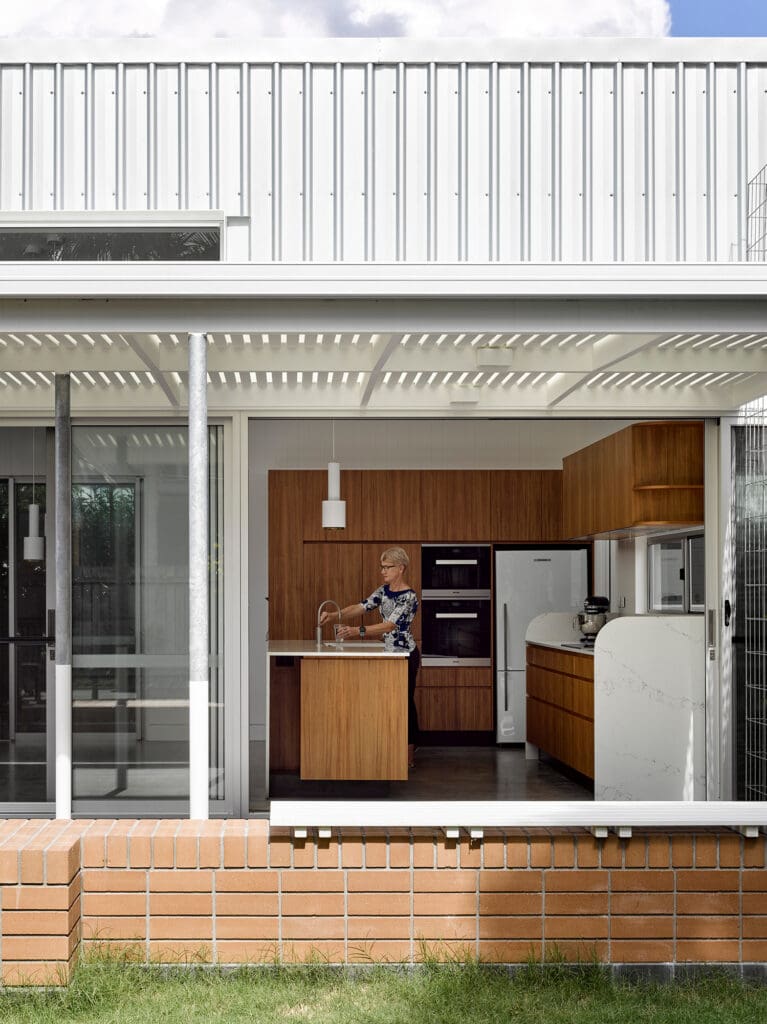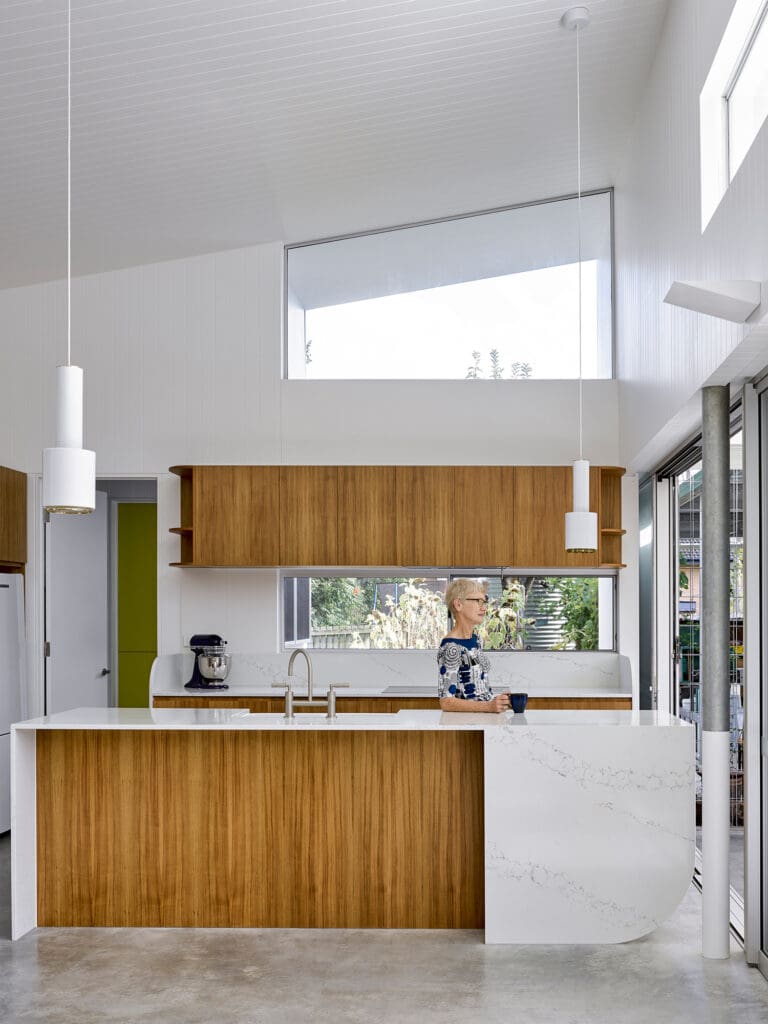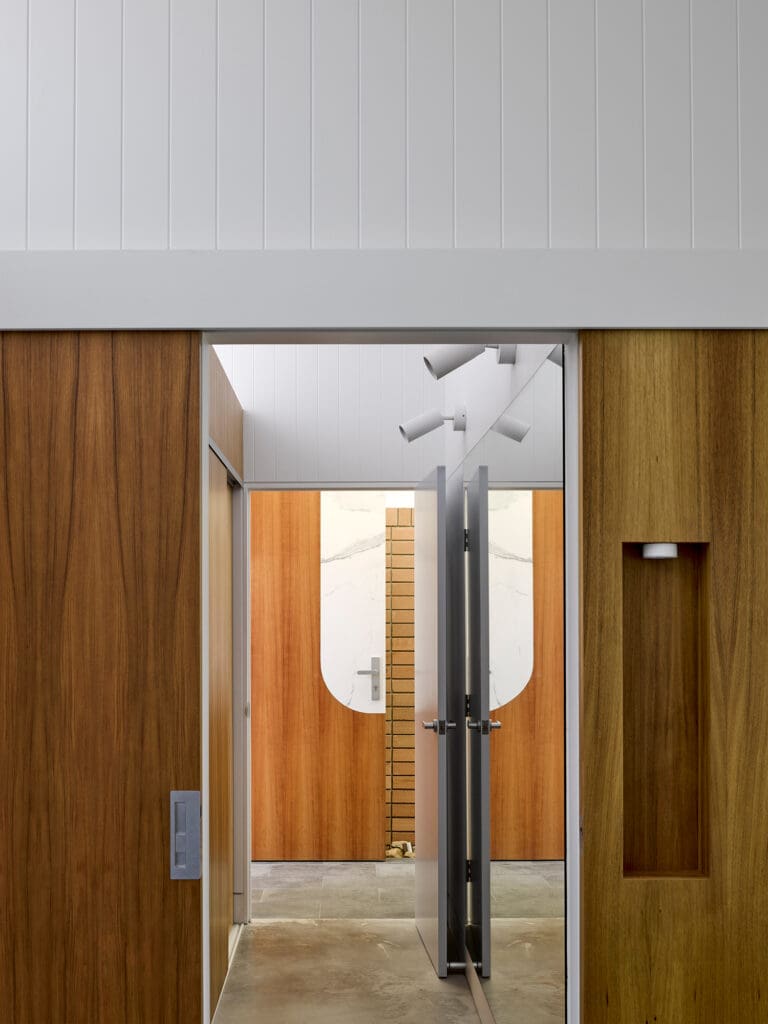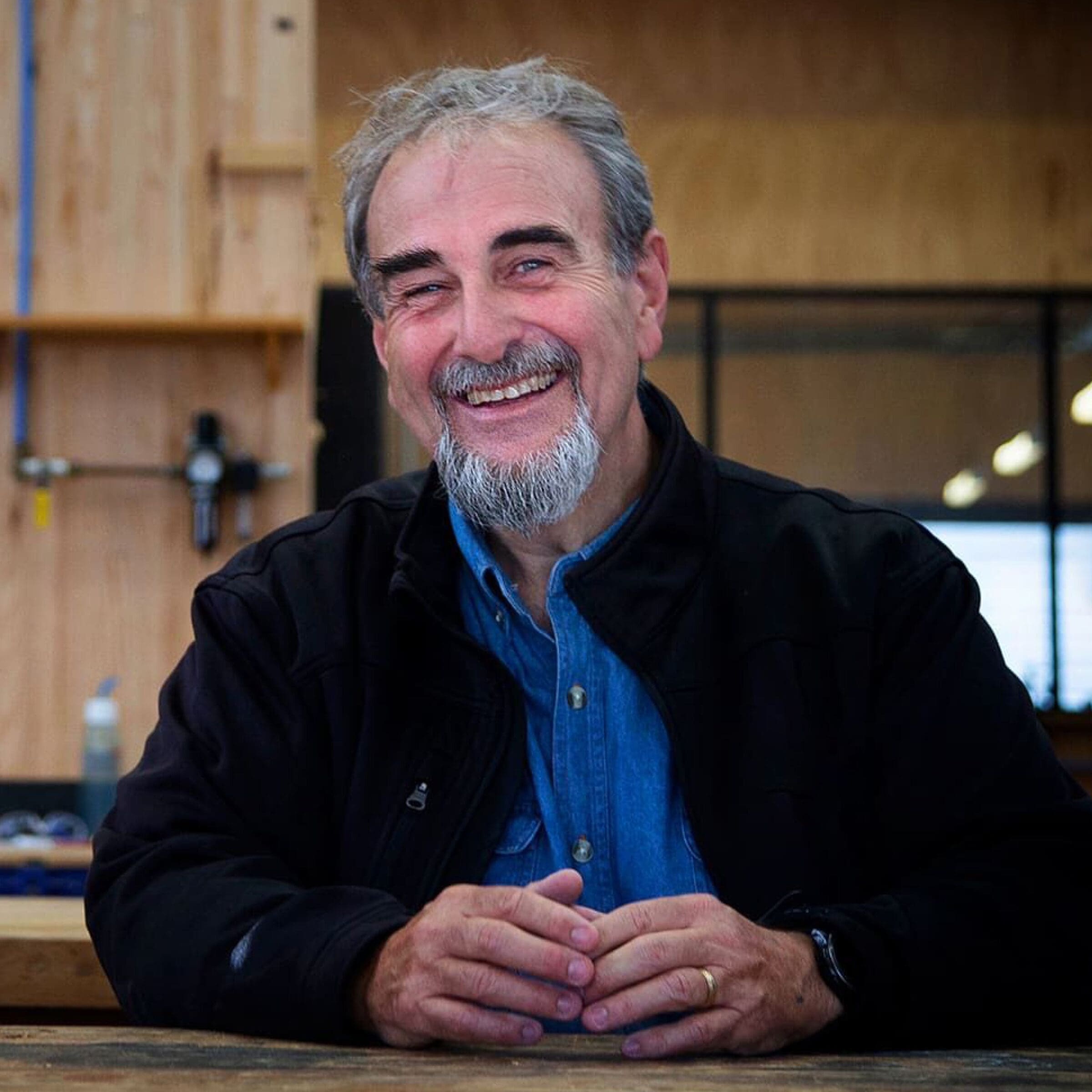Honeyworks House: How Blackwood and considered design created a home that hasn’t aged in ten years
When architect Paul Butterworth was commissioned to design Honeyworks House a decade ago, the brief was clear: create a modest, garden-oriented home for empty nesters returning from North Queensland to Brisbane that would sit comfortably amongst its mid-century modern neighbours. What emerged was a masterclass in how authentic materials, particularly Tasmanian Blackwood, can transform a house built on a tight budget into a warm, enduring home, that has gained a cult following.
The Challenge: Warmth on a Minimal Budget
The clients were moving back from North Queensland, where they wanted to retune their lifestyle and therefore the house, but the existing high-set house didn’t facilitate that. Paul Butterworth Architect was commissioned to build a new house on the site which would sit comfortably with the neighbouring homes, which were of this era.
It was designed not to be ostentatious; their neighbours had brick and breeze block houses with a mid-century modern design. So they wanted their new house to be nice and discreet and sit comfortably in the street. This house feels authentic in the surrounds.
Honeyworks House, named after the owners’ honey-making business and the bee hives in the garden of the property, was built with the efficiency of a shed. Bricks recycled from the original house, zincalume metal cladding, polished concrete floors, aluminium windows, and white-painted walls were all utilitarian and needed something special to make the space feel inviting. “We needed a real timber product in the house,” explains architect Paul Butterworth. “The warmth of the real timber made the industrial aesthetic feel like a home.”
Working within a tight budget, the design and usage of a premium timber had to be strategic. Enter Tasmanian Blackwood.
Why Tasmanian Blackwood?
After evaluating a wide range of Australian timbers, Tasmanian Blackwood emerged as the clear winner. Its distinctive colour, grain pattern, density, and texture proved perfect for the project’s needs. The rich, warm tones complemented the terracotta brick beautifully and worked harmoniously with the stone elements, adding depth to the palette without overwhelming the minimalist aesthetic. The density gave durability.
But the choice was about more than aesthetics. “We choose Australian-grown products for all our timbers,” notes Butterworth. “We have such a good timber industry the choice is easy to find what we need.” With full chain of custody certification, Blackwood aligned with the practice’s commitment to sustainable design.
Strategic Application: The Hero Material
Tasmanian blackwood became the hero of the property, appearing throughout the home in carefully considered applications:
The Blackwood was used everywhere for all the cabinetry,” says Butterworth, “all the doors, tv cabinets, robes and storage areas and bathroom vanities. We inlayed and inset it in the wall cladding as well, instead of using all plasterboard. We used curves as a conceptually designed element. So everywhere you looked, you got a glimpse of it, it was a touchstone of the design.
To protect the timber’s longevity, the Blackwood was finished with Intergrain UltraClear, a water-based coating chosen specifically for its clarity. “We used this as it is clear and didn’t have any tint, so we could see the natural colour and timber grain,” says Butterworth.
Performance Over Time
A decade on, the Blackwood has exceeded expectations. Despite Queensland’s challenging humid climate and the home’s indoor-outdoor design with an internal courtyard and large doors that open wide, letting air flow throughout the home, the timber has remained as good as new. The key to this longevity lay in thoughtful detailing: edges were trimmed to avoid exposed end grain, no timber touches the ground, and all wet areas featuring Blackwood were exceptionally well ventilated.
The Secret to Timeless Design
What makes Honeyworks House look as fresh today as it did ten years ago? According to Butterworth, the answer lies in authenticity.
By default, using natural materials doesn’t date,” he explains. “And everything is authentic in its treatment. Artificial ‘wood grain’ products, they date, any material that is pretending to be something else dates, but the authenticity of the materials used in this house has resonated with people over time.
This philosophy extends beyond material selection to the overall design approach. Rather than chasing trends, the team referenced the mid-century modern era of the neighbouring homes, using materials, timber, brick and stone in their natural colours and finishes. The result is a home that feels both nostalgic and contemporary, modest yet sophisticated.
Trendy is inauthentic, any artificial product designed to be something that it isn’t runs into trouble,” Butterworth notes. The Tasmanian Blackwood, true to its nature and beautifully finished, has proven central to this success.
A Testament to Value
The impact of the Tasmanian Blackwood extended far beyond aesthetics. Within a tight budget, the design team achieved remarkable bang for the buck. “We had just enough Blackwood in the project to do the job we needed it to do within the budget,” says Butterworth. “But it was vital to the success of the project; it made it feel like a home.”
The proof is in the response: someone stopped by just a week after the clients moved in and offered to buy the house. It has maintained a cult following over the years, testament to its understated charm and the way the Blackwood elevates every space it adorns.
The Verdict
Asked if he would specify Tasmanian Blackwood again in future projects, Butterworth’s response is unequivocal:
100% would use Blackwood on any other projects that come in. It was a lovely product, the client loved it, and everyone who sees it loves it.
For architects seeking a material that combines beauty, durability, and sustainability, Honeyworks House stands as compelling evidence of Tasmanian Blackwood’s potential. In the hands of a thoughtful designer, this Tasmanian timber can transform a modest budget into a timeless home, one that looks as fresh today as it did a decade ago, and will continue to do so for decades to come.
Project Details:
- Architect: Paul Butterworth Architect
- Builder: Black Developments – Tim Black
- Photography: Christopher Fredrick Jones
- Key Material: Tasmanian Blackwood
- Finish: Intergrain UltraClear, (water-based)


